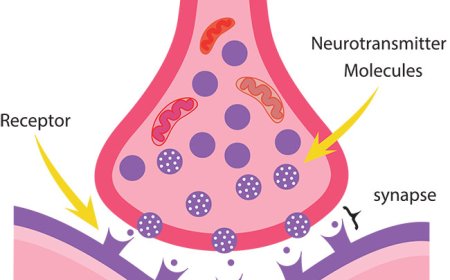Major Bones of the Human Body: A Student’s Guide to the Skeleton
Discover the major bones in the human body in this student-friendly guide. Learn the names, locations, and functions of key bones that help you move, stand, and stay protected. Includes quiz and summary.
🦴 Major Bones of the Human Body: A Student’s Guide to the Skeleton
Your skeleton may seem like a simple frame of bones, but it’s really a powerful system of over 200 parts working together. Some bones protect your organs, others help you move, and many do both! Learning the major bones in your body helps you understand how your body is built and how it stays strong, flexible, and balanced.
Let’s explore the biggest and most important bones—what they do, where they are, and why they matter.
🧱 Two Main Sections of the Skeleton
Your skeleton is divided into two main parts:
1. Axial Skeleton
This includes the bones in the center of your body:
Skull
Spine (vertebral column)
Rib cage
It protects your brain, heart, lungs, and spinal cord.
2. Appendicular Skeleton
These are the bones attached to the center, like:
Arms and legs
Shoulders and hips
This part helps you move and supports body weight.
💀 Skull – The Brain Protector
The skull is made up of 22 bones, most of which are fused together to protect your brain. The lower part, called the jawbone (mandible), is the only part that moves. It helps you chew, talk, and yawn.
The skull also:
Holds and protects your eyes, ears, and nose
Gives shape to your face
Has small openings (foramina) for nerves and blood vessels
🧱 Spine (Vertebral Column) – The Body’s Central Support
Your spine is a long column made of 33 vertebrae, stacked on top of each other. It:
Protects the spinal cord
Helps you stand, bend, and twist
Supports the head and upper body
The spine has five regions:
Cervical (neck)
Thoracic (upper back)
Lumbar (lower back)
Sacrum
Coccyx (tailbone)
Between each vertebra is a soft pad of cartilage called a disc, which acts as a cushion.
🛡️ Rib Cage – The Shield for Your Chest
You have 12 pairs of ribs that curve around your chest. The rib cage:
Protects your heart and lungs
Helps you breathe by moving in and out with each breath
Connects to the sternum (breastbone) in the front and to the spine in the back
💪 Arms – Bones for Lifting and Reaching
Your arms contain several important bones:
Humerus – The upper arm bone, connects the shoulder to the elbow
Radius – One of the two forearm bones, on the thumb side
Ulna – The second forearm bone, on the pinky side
Together, these bones help you lift, push, pull, and carry things every day.
🚶 Legs – The Body’s Strongest Bones
Your legs carry the weight of your whole body. The major leg bones include:
Femur – The longest and strongest bone in the body (thigh)
Tibia – The larger of the two lower leg bones (shinbone)
Fibula – The thinner bone next to the tibia
Patella – The kneecap, which protects the knee joint
These bones allow you to walk, run, kick, and jump.
🦶 Hands and Feet – Built for Movement
Each hand and foot has 27 bones! These include:
Carpals (wrist bones)
Metacarpals (hand bones)
Phalanges (finger and toe bones)
Your hands help you grip and hold things, while your feet give you balance and support for movement.
🎉 Fun Facts About Major Bones
Your femur is stronger than concrete (pound for pound)
Babies are born without kneecaps—they form later from cartilage
Your skull has tiny ear bones called ossicles—the smallest bones in your body
The hyoid bone in your neck isn’t connected to any other bone—it supports your tongue!
Bone cells replace themselves every 7–10 years in healthy bones
🧠 Vocabulary
Skeleton – The entire framework of bones in the body
Axial skeleton – The bones in the center of the body (skull, spine, ribs)
Appendicular skeleton – The bones in the arms, legs, shoulders, and hips
Vertebrae – Small bones that stack to form the spine
Sternum – The flat bone in the center of the chest (breastbone)
Humerus – The upper arm bone
Femur – The thigh bone, longest in the body
Patella – The kneecap
Phalanges – Bones of the fingers and toes
Disc – Cartilage pad between vertebrae
✅ Interactive Quiz: Name That Bone!
1. What is the longest bone in the body?
A. Humerus
B. Spine
C. Femur
D. Tibia
✅ Correct Answer: C
2. What protects your brain?
A. Spine
B. Skull
C. Ribs
D. Shoulder
✅ Correct Answer: B
3. What are the bones in your back called?
A. Phalanges
B. Discs
C. Vertebrae
D. Carpals
✅ Correct Answer: C
4. What bone is found in your upper arm?
A. Femur
B. Ulna
C. Radius
D. Humerus
✅ Correct Answer: D
5. What bone protects your knee joint?
A. Tibia
B. Patella
C. Fibula
D. Pelvis
✅ Correct Answer: B
🧒 Kid-Friendly Summary
Your body has 206 bones, and some are bigger or more important than others. The skull, spine, ribs, arms, and legs all work together to help you move, protect your organs, and stay balanced. Knowing your bones helps you understand how amazing your body really is!



















































